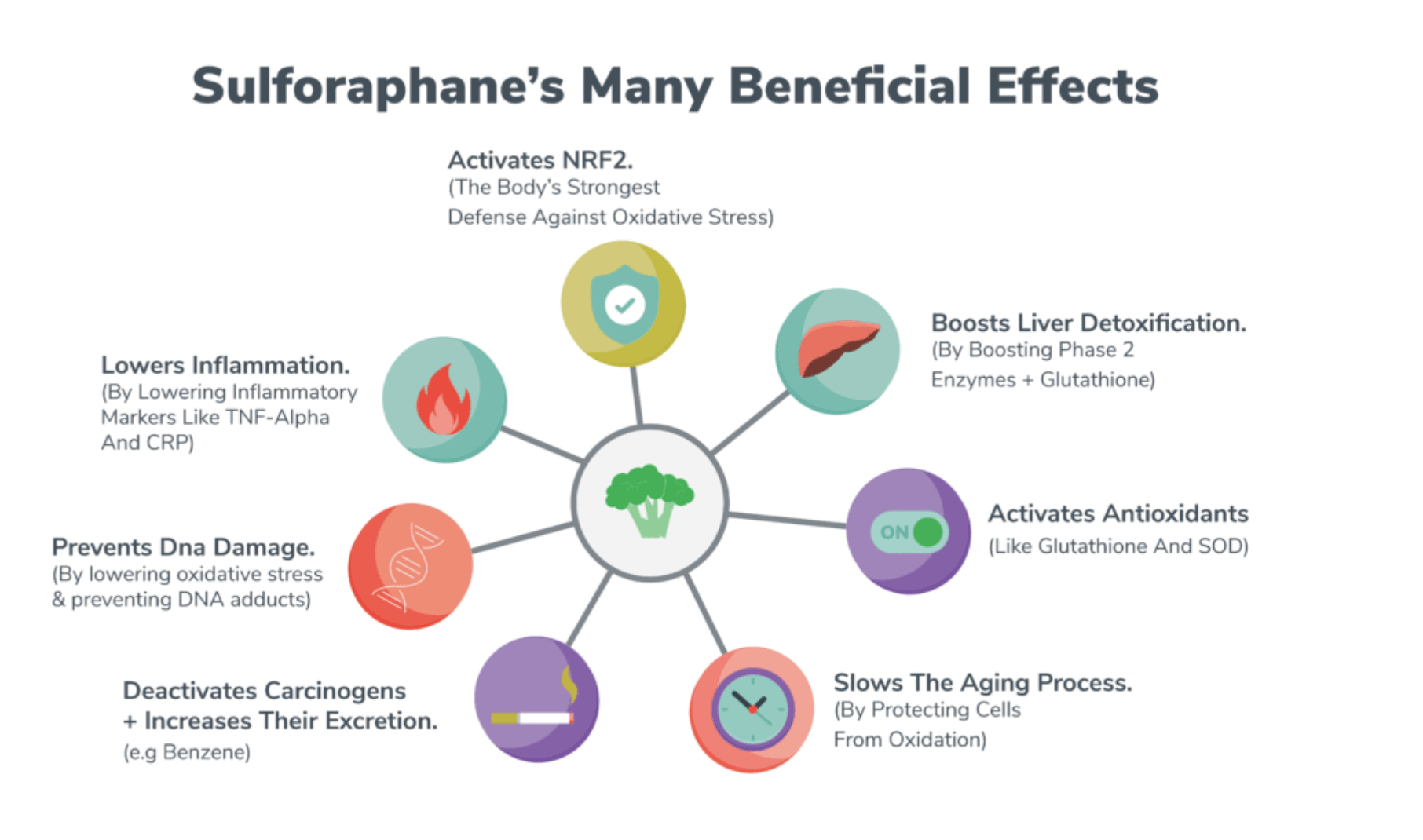Sulforaphane is a potent plant compound formed in the body when we consume plants in the Brassica/Cruciferous family. These veggies which include; kale, broccoli, cabbage and radishes have long been understood to have potent health protective properties.
Dietary inclusion of 4-5 servings of Brassica veggies per month have been shown to decrease various cancers by reducing oxidative stress, induce detoxification enzymes so that we clear carcinogens and toxins out of the body more efficiently, stimulate the immune system, decrease the risk of cancers including lung, breast, GI (colon stomach etc) prostate and endometrial cancers through, inhibit malignant transformation and carcinogenic mutations in cells, as well as, reduce proliferation of cancer cells themselves.
In the 1990’s researchers discovered that a class of sulfur based molecules present in brassica veggies were metabolized into a compound called sulforaphane which has powerful effects on health through turning on genes that promote health while down regulating others that promote disease.
Research on sulforaphane over the last 2 decades has shown that this powerful compound through core mechanisms of turning off inflammation while dialling up our body’s ability to detoxify and make potent antioxidants give the ability to prevent and treat many chronic diseases from diabetes, heart disease, dementia to cancer.
Sulforaphane exerts its magic through modifying the expression of many genes. Most notably it powerfully influences a pathway called nrf2 that controls over 400 genes to promote health. Sulforpahane also down regulates an important immune pathway called NfKb, to improve innate immunity, viral surveillance and clearance by the immune system, while modulating inflammation. As most chronic disease is in some part related to unresolved inflammation and oxidative stress sulforpahane has been shown to be a powerful intervention for everything from arteriosclerosis and diabetes, to autoimmunity, cancer and dementia
Unfortunately the enzyme that makes suforaphane from plant precursors is heat sensitive so a few extra steps need to be taken with adult brassica veggies. Additionally flowers of brassica (ie broccoli) tend to contain goiterogens and others may contain high levels of oxalates.
Sulforaphane is produced when the cells of brassica veggies are crushed allowing the precursors and enzyme (myrosinase) to mix and begin the conversion…
To optimize sullforaphane from your cabbage/kale/brocc etc:
1. Chop veggies first and let sit for 10 min.
2. Eat raw or steam lightly for less than 10 min
3. Use raw diakon or chopped radish, moringa powder or mustard (though most mustard in NZ is irradiated) as a condiment or in dressing. Radish/moringa/mustard. contain myrosinase enzyme, which can convert precursors to sulforaphane
4. Eat broc/brassica microgreens!
The microgreens of brassica vegetables contain anywhere from 10-100X the sulforaphane precursors as their mature counterparts, meaning you only need small quantities to supercharge your health, that’s why in 2007 I began growing my own at home. I’ve become so passionate about the potential health benefits of including sulforaphane rich foods into our diet, I’m teaching workshops to teach and give you all the knowledge and tools you need to grow your own!
